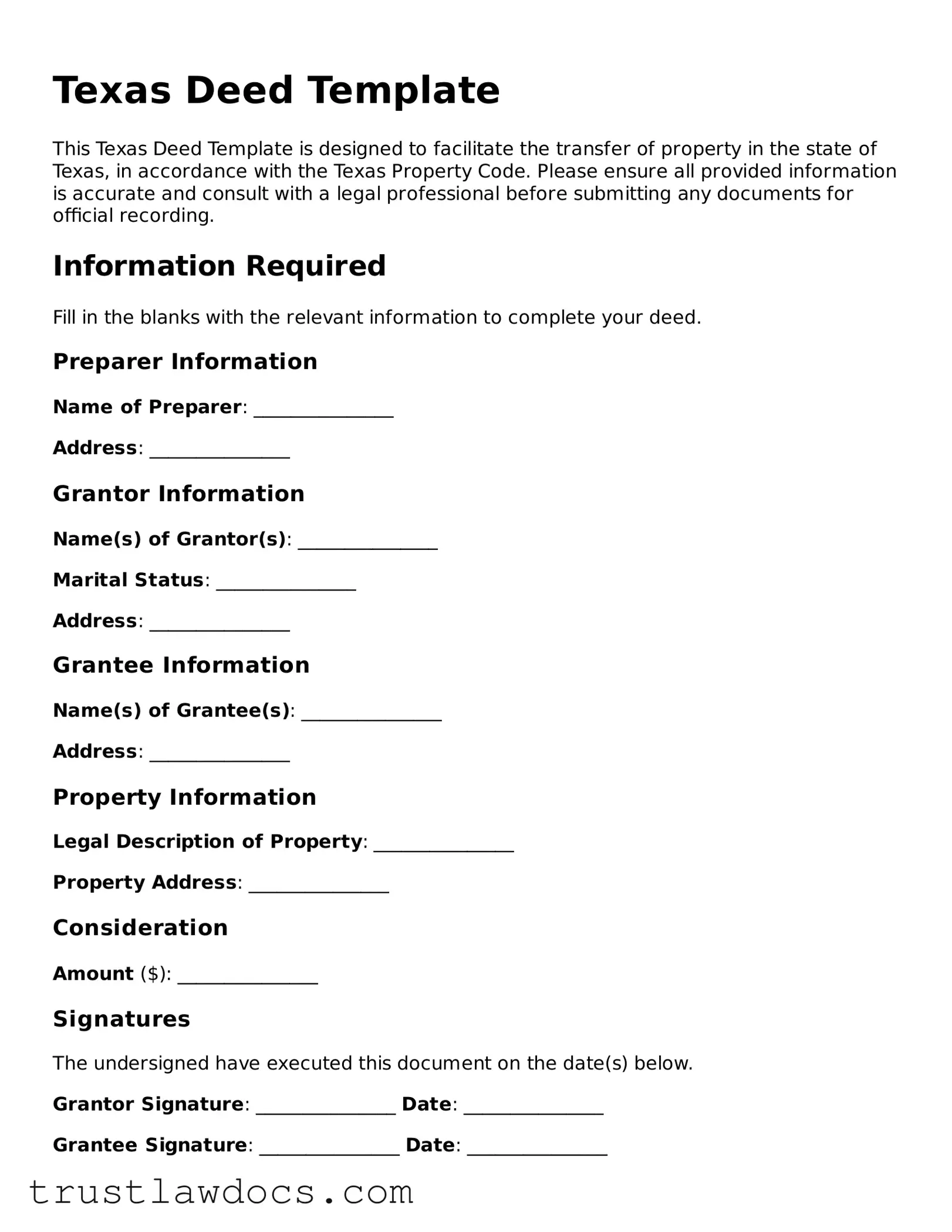The Texas Deed form, an instrumental document in transferring property ownership from one party to another, shares similarities with various other documents used in real estate and legal transactions. These documents, while serving different purposes, incorporate elements of agreement, transfer, and declaration between parties.
One similar document is the Warranty Deed. This document also facilitates the transfer of property ownership but with added assurance that the seller holds a clear title to the property. Both documents ensure the legal transfer of ownership, though the Warranty Deed offers the buyer greater protection against claims on the property.
The Quitclaim Deed is another related document, used to transfer any interest in real property the grantor may have to the grantee without any guarantee of clear title. Like the Texas Deed form, it modifies ownership rights, although it offers less security to the recipient of the property rights.
A Grant Deed, much like the Texas Deed, transfers property ownership from one party to another. It guarantees that the property has not been sold to anyone else and is free of encumbrances, except those disclosed. This document-type balances between a Warranty Deed and a Quitclaim Deed in terms of the level of protection it offers to the buyer.
The Trust Deed, or Deed of Trust, is a document that implicates real property in securing a debt, designating a trustee who holds the property's title until the debt is paid off. While it serves a different purpose, involving a lending scenario, it resembles the Texas Deed form in its involvement in property title transfers, albeit conditionally.
The Deed of Surrender, which is primarily used in lease agreements, involves a tenant relinquishing rights to a property back to the landlord or lessor, effectively ending the lease. While focused on rental agreements, it shares with the Texas Deed form the concept of transferring rights over property, albeit without a sale.
Affidavits of Heirship document the transfer of property ownership in the absence of a will, identifying the rightful heirs to a deceased person's estate. Similar to the Texas Deed form, this document deals with the transfer of ownership, although it is utilized within the probate process and does not involve a traditional buying or selling transaction.
The Transfer on Death Deed allows property owners to name a beneficiary to whom the property will transfer upon the owner's death, without the need for probate. This document, while planning for future ownership transfer similar to the Texas Deed form, is uniquely designed to circumvent the probate process, making the transition smoother for the designated beneficiary.
Finally, a Real Estate Purchase Agreement is an agreement between a buyer and seller to transfer a property for a specified price after meeting certain conditions. Though it precedes the execution of a deed, including the Texas Deed form, by outlining the terms of the sale, it is integral to the process of transferring real estate ownership.
These documents, while serving unique roles within the legal and real estate arenas, intersect with the Texas Deed form in their collective aim to delineate, transfer, or clarify rights and responsibilities concerning property ownership. Each, in its way, establishes agreements that impact the status and disposition of real estate, reflecting the complexity and significance of property transactions.
